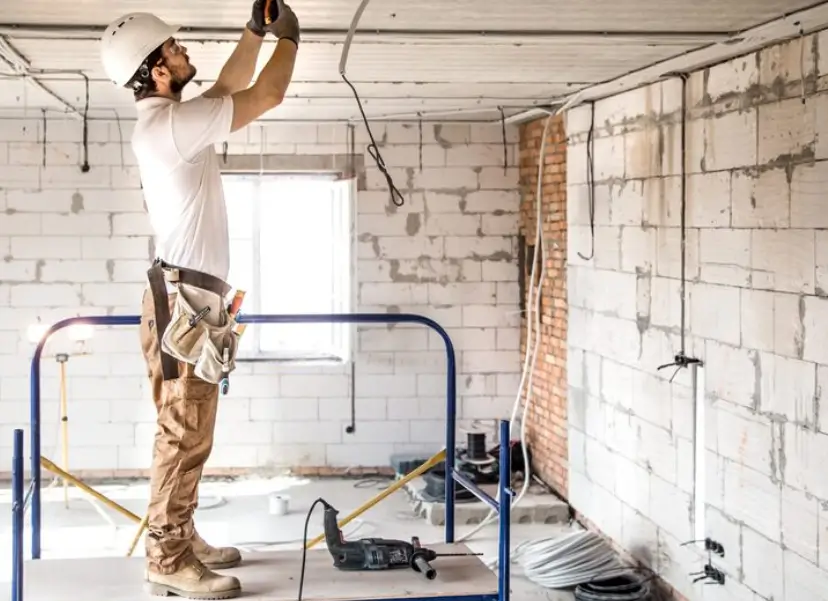Low ceilings present common challenges in basement renovation projects, but thoughtful design strategies can create comfortable and appealing spaces despite height limitations. Most basement ceilings measure 7 to 8 feet high, which meets minimum building codes but can feel cramped without proper planning and execution.
Ceiling Height Requirements
Building codes typically require 7.5-foot minimum ceiling heights for habitable basement spaces, though some jurisdictions allow 7 feet in specific circumstances. These requirements ensure adequate headroom for occupant safety and comfort. Basement renovation projects must comply with local codes while maximizing available vertical space.
Mechanical systems like ductwork, plumbing, and electrical runs often reduce effective ceiling heights in basement renovation projects. Standard drop ceiling installations can eliminate 4 to 6 inches of precious headroom. Creative routing and compact system design help preserve maximum ceiling height during renovation work.
Structural elements including beams, posts, and headers create additional ceiling height challenges in basement renovation projects. Steel beam replacements can reduce structural depth while maintaining load-bearing capacity. Professional engineering consultation ensures safe modifications that optimize available space.
Design Strategies for Low-Ceiling Basements
Light colors on ceilings and walls create illusions of height in basement renovation projects. White and pale neutral tones reflect available light and make spaces feel more open. Dark colors absorb light and visually lower ceilings, making already compact spaces feel smaller and more confined.
Recessed lighting eliminates the need for hanging fixtures that reduce effective headroom in basement renovation projects. LED can lights provide excellent illumination while maintaining clean ceiling lines. Strategic placement creates even light distribution without creating harsh shadows or dark spots.
Horizontal design elements draw eyes along wall surfaces rather than emphasizing ceiling height limitations in basement renovation projects. Chair rails, wainscoting, and floating shelves create visual interest at eye level. These features distract attention from overhead restrictions while adding functional storage and decorative appeal.
Ceiling Treatment Options for Basement Renovation
Exposed ceiling designs eliminate traditional framing and drywall that consume vertical space in basement renovation projects. Painted joists and mechanicals create industrial aesthetics while maximizing headroom. This approach works particularly well in recreational areas and workshops where casual atmospheres are appropriate.
Drywall ceilings with smooth finishes provide clean, finished appearances in basement renovation projects. Careful framing techniques minimize thickness while maintaining structural integrity. Proper insulation and vapor barriers prevent moisture issues that can damage finished surfaces over time.
Drop ceiling systems offer easy access to mechanical systems in basement renovation projects while providing finished appearances. Modern acoustic tiles come in various styles that complement different design themes. Some manufacturers offer tiles with patterns that create visual height through optical illusions.
Maximizing Vertical Space During Construction
Careful planning during basement renovation projects identifies opportunities to gain additional ceiling height. Lowering floor levels through excavation adds headroom but requires significant structural and waterproofing work. Cost considerations often make this approach impractical for most renovation budgets.
Rerouting mechanical systems during basement renovation projects can reclaim valuable ceiling space. Moving ductwork into floor systems or exterior walls eliminates overhead obstructions. Tankless water heaters and compact HVAC equipment reduce space requirements compared to traditional systems.
Beam modifications during basement renovation projects can increase clearances in specific areas. Steel reinforcement allows removal of some support posts while maintaining structural integrity. Professional engineering ensures modifications meet building codes and safety standards.
Furniture & Layout Considerations
Low-profile furniture works better in basement renovation projects with height limitations. Platform beds, low-back sofas, and streamlined storage units maintain proportional relationships with ceiling heights. Oversized furniture can overwhelm spaces and emphasize vertical restrictions.
Room layouts in basement renovation projects should consider ceiling height variations throughout spaces. Position seating areas in locations with maximum headroom for comfort. Use lower ceiling areas for storage, mechanical rooms, or other functions that require less occupancy time.
Built-in storage solutions in basement renovation projects eliminate bulky furniture that can make low-ceiling spaces feel cramped. Custom shelving, window seats, and entertainment centers provide functionality without consuming floor space or emphasizing height limitations through vertical mass.
Lighting Design for Low Ceilings
Layered lighting approaches work best in basement renovation projects with ceiling height restrictions. Combine ambient, task, and accent lighting to create depth and visual interest. Multiple light sources at different levels help spaces feel larger and more dynamic.
Wall-mounted fixtures in basement renovation projects eliminate overhead clearance issues while providing functional illumination. Sconces, picture lights, and strip lighting create attractive lighting schemes without sacrificing headroom. These fixtures also add visual interest at eye level.
Natural light sources significantly improve perception of space in basement renovation projects. Larger windows, window wells, and light tubes bring daylight into underground spaces. Natural light makes low ceilings feel less oppressive while improving overall ambiance and energy efficiency.
Professional Solutions for Ceiling Challenges
Experienced contractors specializing in basement renovation projects understand techniques for maximizing ceiling height and improving spatial perception. Professional design services help homeowners make informed decisions about layout, finishes, and systems that optimize available space.
Structural engineers provide solutions for ceiling height issues in basement renovation projects that require beam modifications or floor lowering. Professional consultation ensures safe, code-compliant modifications that achieve desired results without compromising building integrity.
Interior designers experienced with basement renovation projects offer valuable insight into color schemes, lighting design, and furniture selection that make low-ceiling spaces feel comfortable and appealing. Professional guidance helps avoid common mistakes that emphasize rather than minimize height limitations.
Low ceilings need not prevent successful basement renovation projects. Thoughtful design, strategic planning, and professional expertise create comfortable, functional spaces that maximize available height while providing attractive, livable environments for families to enjoy.

